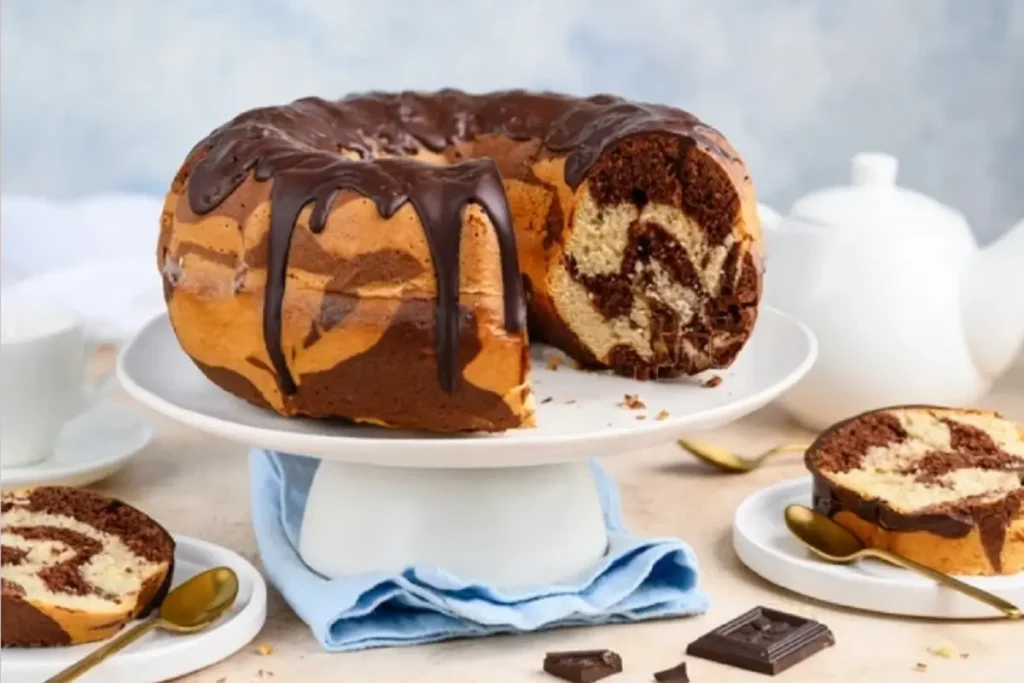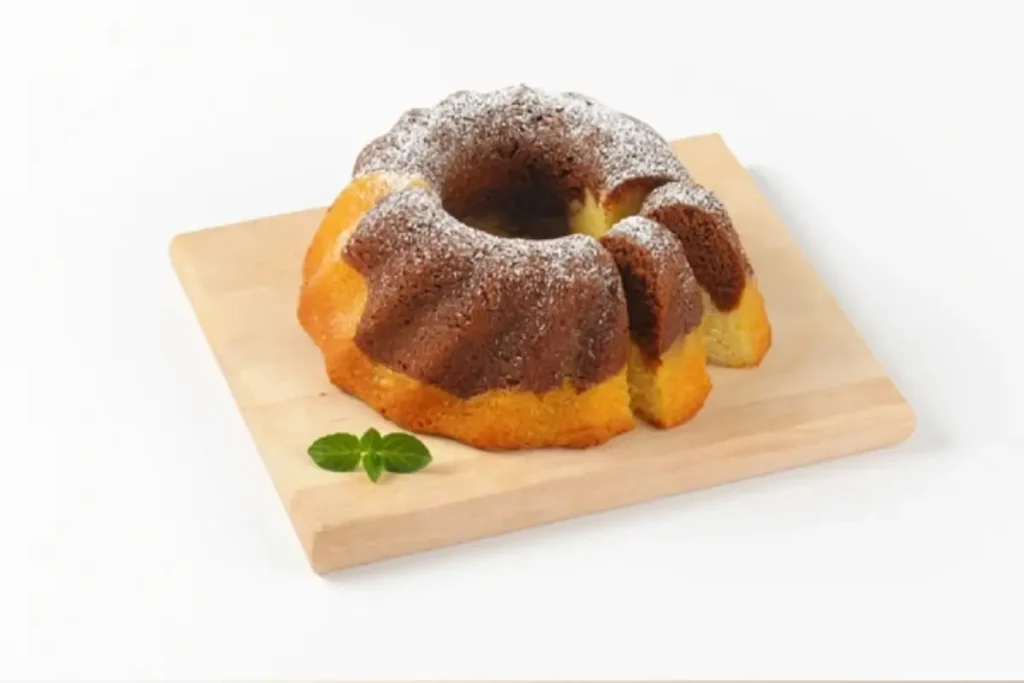The Origins and Naming of Bundt Cake
I. Introduction to Bundt Cake
Countless tables have featured the beloved Bundt cake, delighting taste buds for decades and earning a special place in many hearts. But, have you ever pondered the reason behind its name, “Bundt“? This name sparks intrigue and curiosity, driving us to explore the fascinating history and naming of Bundt cake and its cultural significance.
II. The History of Bundt Cake
Let’s journey back to the mid-20th century to grasp the origins of Bundt cake, which then rose to prominence as a staple American dessert. The narrative starts with H. David Dalquist, founder of Nordic Ware, who aimed to invent a pan that would make cakes not only delicious but also visually striking.
After extensive experimentation, Dalquist introduced the revolutionary Bundt pan.
For an in-depth look at Nordic Ware and the Bundt pan‘s invention, check out Smithsonian Magazine’s article.
III. The Creation of the Bundt Pan
The Bundt pan stands out with its unique ring shape and intricate design, ensuring even heat distribution for moist, perfectly baked cakes. Its fluted sides and central tube solve the issue of uneven cooking, often resulting in a dry or overcooked center.
This invention marked a significant milestone for home bakers, offering a simple way to bake impressive cakes. Consequently, the Bundt pan and Bundt cake quickly became household favorites.
To discover the unique designs and benefits of modern Bundt pans, visit King Arthur Baking Company’s website.
IV. The Naming of Bundt Cake

Understanding the Bundt pan‘s genesis leads us to the intriguing name “Bundt” cake. Derived from the German word “bund,” meaning a gathering or group, the name reflects the cake’s communal nature, often shared among friends and family at social events.
Choosing the name “Bundt” was a deliberate tribute to the pan’s Scandinavian and German influences, echoing the traditional European cake molds like Gugelhupf and Kugelhopf.
For more on the European roots of Bundt cake, visit The European Cake Society.
V. The Influence of European Cake Traditions
Although the Bundt pan is an American innovation, its design draws heavily from European cake traditions. Inspired by the traditional Gugelhupf and Kugelhopf cakes, the Bundt pan brings a touch of European elegance to American baking.
VI. The Popularity of Bundt Cake in America
In the 1960s and 1970s, Bundt cake saw a surge in popularity across America, thanks to the growing trend of home baking and the influence of cooking magazines and TV shows. It became a symbol of domesticity, featured widely in advertisements and recipes.
VII. The Enduring Legacy of Bundt Cake
Today, Bundt cake remains a cherished dessert, known for its beauty and delicious taste. It’s a staple at family gatherings, holidays, and special occasions, with Nordic Ware continually innovating new designs and sizes to meet bakers’ evolving preferences.
Bundt cake‘s legacy goes beyond its flavors and presentation; it symbolizes the joy of baking and sharing homemade treats. It embodies togetherness and celebration, uniting people over a slice of moist, flavorful cake.
In conclusion, the story of Bundt cake is rich in history and tradition. The Bundt pan‘s invention transformed cake baking, and the name “Bundt” honors the European traditions that inspired its design. Captivating generations with its beauty and taste, Bundt cake stands as a testament to the enduring appeal of shared culinary delights.

FAQ
- Q1: What are some popular flavors of Bundt cake?
- A1: With a spectrum of flavors from classic vanilla and chocolate to inventive lemon blueberry and pumpkin spice, Bundt cake offers endless possibilities for every palate.
- Q2: Can I use a regular cake pan instead of a Bundt pan?
- A2: While you can use a regular cake pan, the Bundt pan‘s unique shape is key to the cake’s distinctive appearance, ensuring even baking and a moist texture.
- Q3: How can I prevent my Bundt cake from sticking to the pan?
- A3: Properly greasing and flouring the pan, or using a non-stick Bundt pan or parchment paper, will help your cake release smoothly.
- Q4: Can I freeze Bundt cake?
- A4: Absolutely, Bundt cake freezes well. Wrap it tightly in plastic wrap or aluminum foil before freezing, and thaw at room temperature before serving.
- Q5: Are there any vegan or gluten-free options for Bundt cake?
- A5: Yes, many recipes offer vegan and gluten-free variations, utilizing alternative ingredients like plant-based milk and gluten-free flour blends to accommodate dietary needs.
The Art of Baking a Perfect Bundt Cake
I. Introduction to Baking a Bundt Cake
Baking a Bundt cake is not just about following a recipe; it is an art form that requires precision, patience, and attention to detail. From selecting the right ingredients to mastering the baking process, every step plays a crucial role in achieving a perfect Bundt cake. In this article, we will explore the secrets to baking a flawless Bundt cake, from preparation to presentation. For those looking to master the art of Bundt cake baking, consider exploring our comprehensive guide to perfect Bundt cakes.
II. Choosing the Right Ingredients
The first step in baking a Bundt cake is selecting the right ingredients. Quality ingredients can make a significant difference in the taste and texture of the final product. Here are some key ingredients to consider:
- Flour: Use all-purpose flour for a classic Bundt cake. If you prefer a lighter texture, you can substitute a portion of the all-purpose flour with cake flour.
- Sugar: Granulated sugar is the most commonly used sweetener in Bundt cake recipes. It provides sweetness and helps to retain moisture in the cake.
- Butter: Unsalted butter is the preferred choice for Bundt cake as it allows you to control the salt content. Make sure the butter is at room temperature for easy mixing.
- Eggs: Eggs add structure and moisture to the cake. Use large eggs unless the recipe specifies otherwise.
- Flavorings: Vanilla extract is a classic flavoring for Bundt cake, but you can also experiment with other extracts like almond or lemon to add a unique twist.
III. Preparing the Bundt Pan
Properly preparing the Bundt pan is essential to ensure that the cake releases easily and maintains its shape. Follow these steps to prepare the pan:
- Grease: Thoroughly grease the entire surface of the pan, including the inner tube and fluted sides. Use a pastry brush or paper towel to evenly distribute the grease.
- Flour: After greasing, dust the pan with flour, tapping out any excess. This creates a non-stick barrier between the pan and the cake batter.
- Alternative Method: If you want to be extra cautious, you can also use a baking spray that combines grease and flour in one convenient step.
IV. Mixing the Batter
The key to a tender and moist Bundt cake lies in properly mixing the batter. Follow these guidelines for a successful batter:
- Creaming Method: Start by creaming the butter and sugar together until light and fluffy. This helps to incorporate air into the batter, resulting in a lighter texture.
- Adding Eggs: Add the eggs one at a time, beating well after each addition. This ensures that the eggs are fully incorporated and helps to prevent curdling.
- Dry Ingredients: In a separate bowl, whisk together the dry ingredients (flour, baking powder, salt, etc.). Gradually add the dry ingredients to the creamed mixture, alternating with any liquid ingredients (milk, sour cream, etc.), beginning and ending with the dry ingredients. This step ensures even distribution of the ingredients and prevents overmixing.
- Mixing Technique: Mix the batter on low speed or by hand, just until the ingredients are combined. Overmixing can lead to a dense and tough cake.

V. Baking the Bundt Cake
Proper baking is crucial to achieving a perfectly baked Bundt cake. Follow these steps for optimal results:
- Preheating: Preheat the oven to the temperature specified in the recipe. This ensures that the cake bakes evenly and rises properly.
- Positioning the Pan: Place the prepared Bundt pan in the center of the oven. Avoid placing it too close to the oven walls or other pans, as this can affect the cake’s baking time and temperature.
- Baking Time: Bake the cake for the time specified in the recipe, but start checking for doneness a few minutes before the recommended time. Insert a toothpick or cake tester into the center of the cake; if it comes out clean or with a few crumbs clinging to it, the cake is done.
- Cooling: Once the cake is baked, remove it from the oven and let it cool in the pan for about 10-15 minutes. This allows the cake to set and makes it easier to remove from the pan without breaking.
- Inverting the Cake: To remove the cake from the pan, place a cooling rack or serving plate on top of the pan. Carefully invert the pan and gently lift it off the cake. If the cake doesn’t release easily, tap the bottom of the pan or gently shake it to loosen the cake.
VI. Decorating and Serving the Bundt Cake
The presentation of a Bundt cake is just as important as its taste. Here are some tips for decorating and serving your Bundt cake:
- Glazes and Frostings: Drizzling a glaze or frosting over the top of the cake can enhance its flavor and appearance. Consider options like a simple powdered sugar glaze, a cream cheese frosting, or a chocolate ganache.
- Fresh Fruits: Adding fresh fruits, such as berries or sliced citrus, can provide a pop of color and freshness to your cake. Arrange them on top or around the cake for an elegant touch.
- Powdered Sugar: Dusting the cake with powdered sugar is a classic and easy way to add a touch of elegance. Use a fine-mesh sieve to evenly sprinkle the sugar over the cake.
- Whipped Cream: Serving the cake with a dollop of whipped cream on the side can complement its richness and provide a light and airy contrast.
- Serving Suggestions: Serve the Bundt cake as a centerpiece dessert for special occasions or as a delightful treat for afternoon tea. Pair it with a scoop of ice cream or a drizzle of caramel sauce for an indulgent twist.
VII. Frequently Asked Questions (FAQ)
- Q: Can I use a different pan shape for a Bundt cake?
- A: While a traditional Bundt pan is recommended for the classic shape, you can use other tube pans or even a regular cake pan. Just adjust the baking time accordingly.
- Q: How can I prevent my Bundt cake from sticking to the pan?
- A: Properly greasing and flouring the pan is essential. You can also try using a non-stick baking spray or lining the pan with parchment paper for extra insurance.
- Q: Can I freeze a Bundt cake?
- A: Yes, Bundt cakes freeze well. Once the cake has cooled completely, wrap it tightly in plastic wrap and then in aluminum foil. Thaw it in the refrigerator overnight before serving.
- Q: How long will a Bundt cake stay fresh?
- A: A properly stored Bundt cake can stay fresh for up to 3-4 days at room temperature. Keep it covered with a cake dome or in an airtight container to maintain its moisture.
- Q: Can I make a gluten-free Bundt cake?
- A: Absolutely! There are many gluten-free flour blends available that can be used as a substitute for regular flour. Just make sure to follow a gluten-free recipe for best results.
VIII. Conclusion
Baking a Bundt cake is a delightful and rewarding experience that allows you to showcase your baking skills. By following the tips and techniques outlined in this article, you can create a stunning and delicious Bundt cake that will impress your family and friends. Remember, practice makes perfect, so don’t be discouraged if your first attempt is not flawless. With time and experience, you will master the art of baking a perfect Bundt cake. Happy baking!






